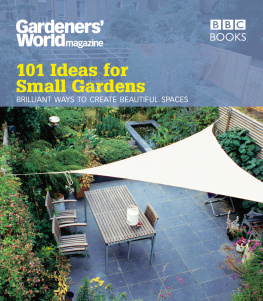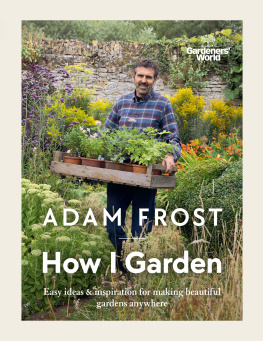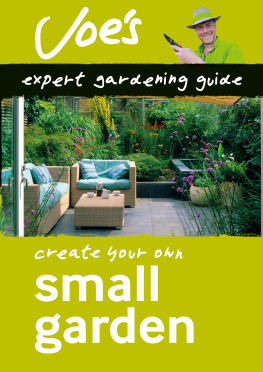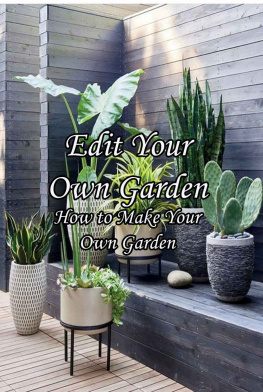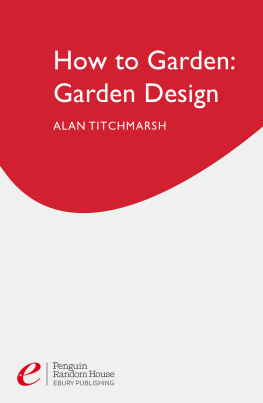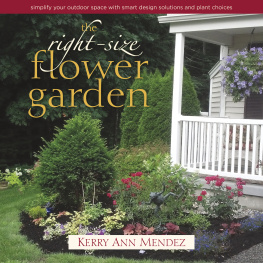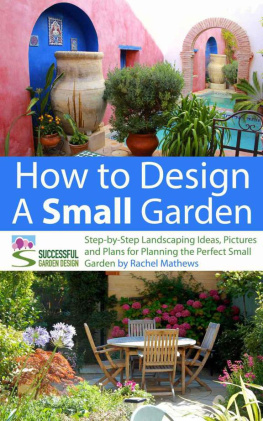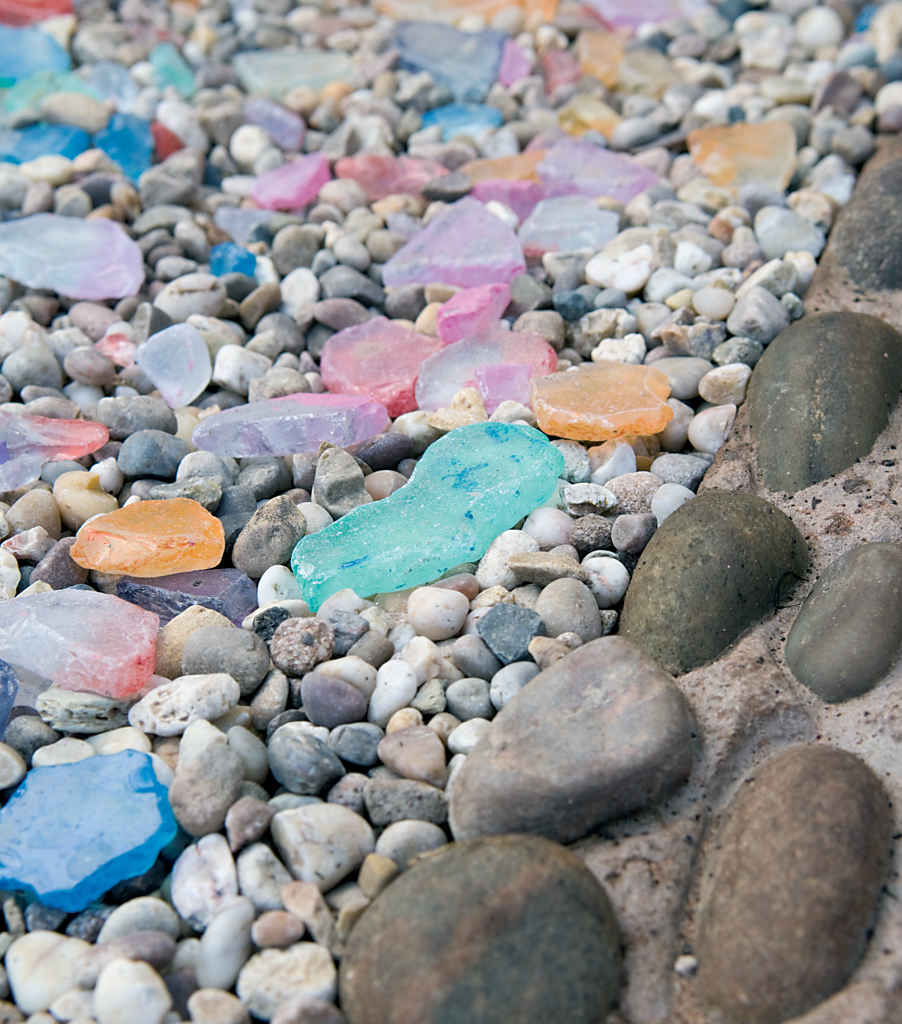About the Book
Just because a garden is small it doesnt mean it cant be beautiful, stylish and make a real impact. So dont lose the plot when faced with a small space; from design through planting to maintenance, follow the inspirational advice and tips of the experts at Gardeners World Magazine and you can make your little garden the garden of your dreams.
Gardeners World Magazine is Britains biggest-selling gardening magazine, providing fresh ideas and clear advice every month.
Find out more at www.gardenersworld.com
Designing
Boxing clever
Disguise bare stems with neatly manicured box.
Time to plant: Spring or autumn.
Most of us wouldnt dream of going outside without our socks on unless it was a blazing hot day, so why should it be any different for trees? This slender trunk would look a little vulnerable and cold without a neatly manicured cube of box (Buxus sempervirens) around its naked ankles.
Perfectly suited to a formal, minimalist garden, the geometric shape of the box echoes other features in the garden, such as nearby garden furniture. Its neat lines mirror the square pattern of the paving material the vibrant green contrasts brilliantly with the dazzling white stone.
A uniform block of box like this would jar if planted under a tree that is allowed to grow naturally with minimal interference from a pair of secateurs. However, here it is perfectly placed under an architectural tree, whose neatly clipped head sits on top of a long length of bare stem. Sometimes the crown of these trees can seem to float as the stems are so lean, but planting at the base helps to ground it and draw it back into the design.
TIP
To keep your topiary sharp, prune box in mid-June, when the leaves are hard and leathery, and again in late summer, if necessary. For accuracy, prune with a pair of hand-held clippers, such as sheep shears.
Leading lines
A series of containers can link one part of the garden to another.
Time to plant: Spring or autumn.
Metallic clumps of astelia, an architectural plant that originates from Australia, make a strong statement rising from tapered containers. The silvery, strap-shaped leaves sparkle in sunshine and contrast vividly with the dark tones of the pot.
A single container planted with an astelia would make an eye-catching feature, but here they become a design tool. A number of plants grown in identical containers can be used to add movement to a space, leading the eye from one part of the garden to another. For instance, they could be placed up a flight of steps, along a low wall or down a path. Choose containers that complement the plants you are planning to grow and are large enough to accommodate their rootballs.
A series of containers like this can also be placed in a row to create a visual and physical barrier alongside a patio, or to separate off one part of the garden.
TIPS
Cover the surface of the compost with a mulch of decorative gravel to suppress weeds and reduce moisture loss. Raise containers on pot feet over winter to help water drain away.
Break it up
Divide up your garden to add interest.
Time to do it: Spring or autumn.
Some garden owners despair of their small rectangular plot and largely lay it to lawn, but by dividing it up you can create a much more stimulating space. Partitioning the garden allows you to enjoy several styles and different types of plants, while creating visual movement. It also entices you to physically move from one part of the garden to another.
Here, the garden has been broken up into four visually defined areas that link together. A patio near the house with stone paving makes the perfect place to sit out and leads to a pergola that rises before a sea of gravel the change of surfacing material indicates a change of zone. A formal lawn leads to a natural area, where a pond and a mixture of ornamental and native plants attract wildlife.
TIPS
Dont try to squeeze in too many zones allow each to breathe for the best effect. Hide some areas with trellis, hedges or tall plants so you dont see the garden in its entirety.
Spark up shady corners
Plant groups of hostas to brighten up the gloom.
Time to plant: Spring or autumn.
In a small garden its likely that youll have pockets of shade created by neighbouring buildings, trees or the planting in your own garden. Rather than curse these gloomy spots and leave them vacant, look on it as an opportunity to grow plants that thrive in limited light.
If your patio doesnt get much sun, brighten it up with a group of hostas in pots. These plants thrive in shade, rewarding you with large, textured leaves, plus lavender-coloured flowers in summer. Protect hostas from slugs by sticking a band of copper tape around each pot.
Choosing a selection of different hostas is a great way to play around with colour, but just a single variety, especially if it has golden or lightly variegated foliage, will really brighten up the gloom. Plant your hostas in different-sized pots to give the display greater impact.
TIPS
Group pots in odd numbers for a balanced display. Alternatives to hostas include busy Lizzies (Impatiens walleriana), sweet flag (Acorus gramineus) and several types of sedge, (such as Carex comans Frosted Curls and C. phyllocephala Sparkler), which are equally good in pots in a shady spot.
New fillings
Turn a gravelled area into an attractive feature.
Time to do it: Any time of year.
Gravel is extremely cost-effective, as it has so many uses in the garden. It can be turned into a cheap and cheerful surface for paths and driveways, be spread thickly as a mulch between drought-tolerant plants, or used to fill any awkward gaps at the edges of patios or paths. Many people even use gravel as a quick fix for parts of the garden that they havent got around to deciding what to do with, spreading it across a large area.
While it is functional, a sea of stones lacks any eyecatching features. A copious sweep of gravel is unlikely to have any visitors to your garden gasping in awe. However, it is easy to pep it up simply mix in some glass chippings that have been tumbled to remove any dangerous edges. These are available in many single colours or can be bought in mixed bags.
TIP
For a textural look, choose tumbled glass pieces that are a different size to your gravel they are generally available in pieces measuring between 3mm and 18mm.
Next page
